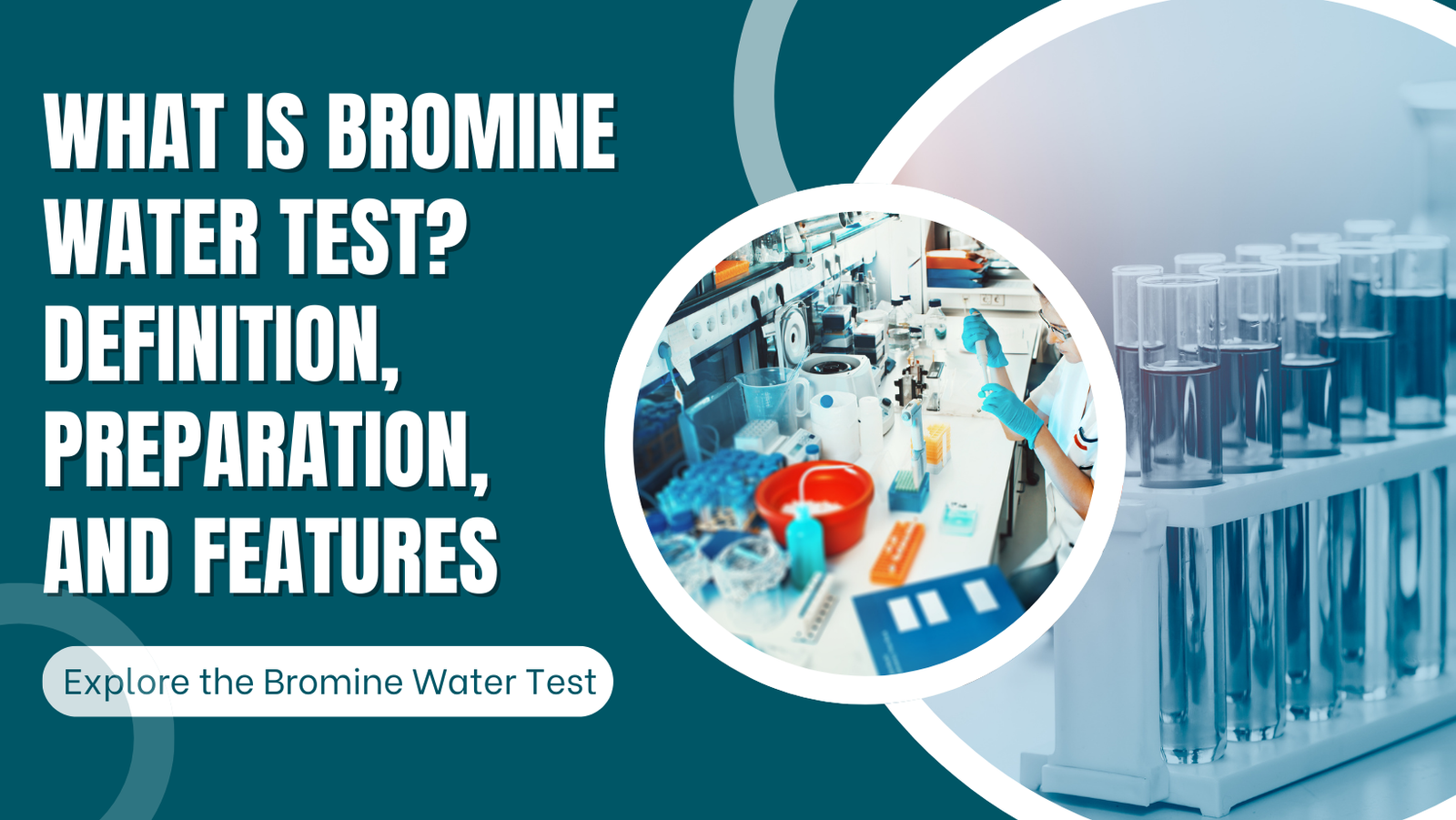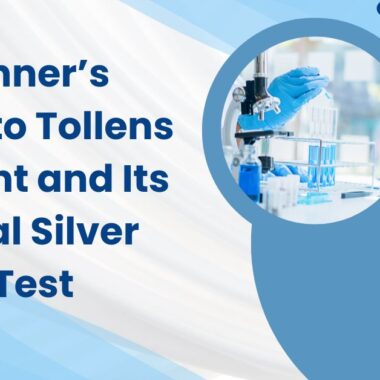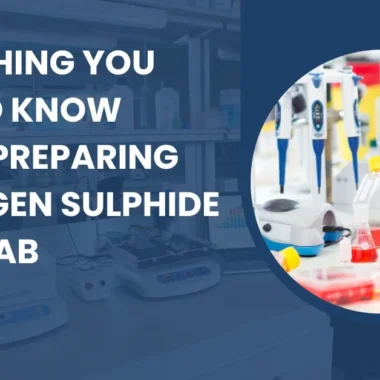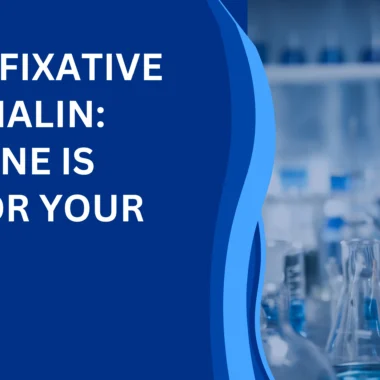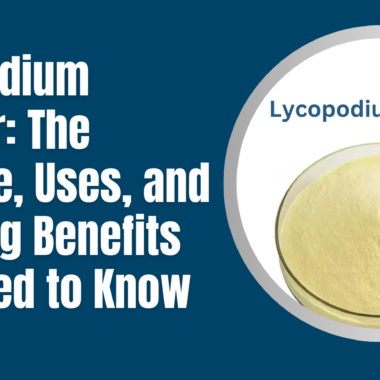Bromine Water Test: A Key Method for Detecting Unsaturation in Compounds
Introduction
The bromine water test is a fundamental qualitative analysis technique used to identify the presence of unsaturated bonds (carbon-carbon double or triple bonds) in organic compounds. This test is widely applied in organic chemistry to differentiate between alkanes, alkenes, and other functional groups that exhibit unsaturation.
What Is Bromine Water?
Bromine water is a reddish-brown solution composed of bromine (Br2) dissolved in water. It is known for its strong oxidizing properties and is used to determine the presence of unsaturated compounds through color change reactions.
Properties of Bromine Water
- Molecular Formula: Br2
- Molecular Mass: 159.81 g/mol
- Density: 1.307 g/mL
- Color: Reddish-brown
- Reaction Mechanism: Halogenation or electrophilic addition
The characteristic color of bromine water fades or disappears when it reacts with unsaturated compounds, indicating the presence of double or triple bonds.
Preparation of Bromine Water
Traditionally, bromine water is prepared by dissolving elemental bromine in water. However, due to safety concerns, an alternative laboratory method involves the reaction of sodium bromide (NaBr) with hydrochloric acid (HCl) and bleach (sodium hypochlorite, NaClO):
2NaBr + NaClO + 2HCl → Br2 + 3NaCl + H2O
Features of the Bromine Water Test
The bromine water test operates on the following key principles:
1. Unsaturation Detection
Bromine readily reacts with compounds containing carbon-carbon double (C=C) or triple (C≡C) bonds, leading to the disappearance of the reddish-brown color. This change serves as an indication of the presence of unsaturation.
2. Electrophilic Addition
Bromine acts as an electrophile and reacts with alkenes or alkynes in an electrophilic addition reaction, forming dibromo-compounds. The reaction mechanism involves the formation of a bromonium ion intermediate.
3. Selectivity
- Alkanes do not react with bromine water, retaining the reddish-brown color.
- Alkenes and alkynes undergo addition reactions, resulting in decolorization.
- Aromatic compounds (benzene and derivatives) do not react due to resonance stability.
4. Qualitative Nature
The test provides a simple yes/no result to determine whether a compound is saturated or unsaturated but does not quantify the number of double or triple bonds.
Bromine Water Test for Various Functional Groups
1. Alkanes (No Reaction)
Alkanes do not undergo an electrophilic addition reaction with bromine water, meaning the solution retains its reddish-brown color.
CH4 (Methane) + Br2 → No reaction
C2H6 (Ethane) + Br2 → No reaction
C3H8( Propane ) + Br2 → No reaction
2. Alkenes (Reaction: Decolorization)
Alkenes react with bromine water via an addition reaction, leading to the formation of dibromo-compounds and decolorization of the solution.
Br2+ C2H4 → Br – CH2 – CH2 – Br
3. Alkynes (Reaction: Decolorization)
Alkynes, like alkenes, undergo electrophilic addition with bromine water, leading to a similar color change.
4. Phenols (Substitution Reaction)
Phenols react with bromine water in a substitution reaction, forming brominated phenols and leading to the formation of a white precipitate.
Chemical Reaction:
C6H5OH+3Br2(aq) → C6H2Br3OH+3HBr
Structural Formula:
- Reactant:Phenol (C6H5OH)
- A benzene ring with a hydroxyl (-OH) group.
- Reagent: Bromine water (Br2).
- Product:2,4,6-Tribromophenol (C6H2Br3OH)
- A benzene ring with an -OH group and three bromine (Br) atoms at positions 2, 4, and 6.
- Byproduct: Hydrobromic acid (HBr).
Observation:
- The reddish-brown color of bromine water disappears, indicating a positive test for phenol.
- A white precipitate of 2,4,6-tribromophenol forms.
5. Aniline (Reaction: White Precipitate Formation)
Aniline reacts with bromine water to form tribromoaniline, resulting in a white precipitate.
Reaction Details:
C6H5NH+3Br2→ C6H2Br3NH+3HBr
Explanation:
- Reactant:Aniline (C6H5NH2)
- A benzene ring with an amino (-NH₂) group.
- Reagent: Bromine (Br2).
- Product:2,4,6-Tribromoaniline (C6H5NH2)
- A benzene ring with an -NH₂ group and three bromine (Br) atoms at positions 2, 4, and 6.
- Byproduct: Hydrobromic acid (HBr).
Observation:
- Decolorization of bromine water (reddish-brown to colorless), indicating a positive test for aniline.
- Formation of a white precipitate of 2,4,6-Tribromoaniline.
6. Aldehydes (Oxidation Reaction)
Aldehydes undergo oxidation with bromine water, forming carboxylic acids. The disappearance of the bromine color signifies the completion of the reaction.
CH3CHO + Br + H2O → CH3COOH + 2HBr
7. Ketones (Alpha-Substitution Reaction)
Ketones undergo an alpha-bromination reaction, forming brominated products.
8. Enols (Reaction: Decolorization)
Enols react with bromine water, forming brominated ketones.
9. Glucose and Fructose (Differentiation Test)
Glucose, containing an aldehyde functional group, reacts with bromine water and decolorizes. Fructose does not react as it lacks an aldehyde group.
Reaction:
C6H12O6+Br2+H2O→C6H12O7+2HBr
Explanation:
- Glucose (C6H12O6 ) has an aldehyde (-CHO) group, which gets oxidized to a carboxylic acid (-COOH) group.
- Bromine water (Br₂/H₂O) acts as an oxidizing agent.
- The aldehyde is converted into gluconic acid (C6H12O7).
- Hydrobromic acid (HBr) is produced as a byproduct.
- The decolorization of bromine water confirms the presence of glucose.
10. Benzene (No Reaction)
Despite being unsaturated, benzene does not react with bromine water because of its stable aromatic nature.
C6H6+Br2→No Reaction
Bromine Water Test for Lipids
The bromine water test can also assess the degree of unsaturation in vegetable oils and fats. Unsaturated fats (containing double bonds) react with bromine water, causing decolorization, whereas saturated fats do not.
Summary Table
| Functional Group | Reaction with Bromine Water | Observation |
| Alkanes | No Reaction | Color remains reddish-brown |
| Alkenes | Electrophilic Addition | Solution decolorizes |
| Alkynes | Electrophilic Addition | Solution decolorizes |
| Phenols | Substitution | White precipitate forms |
| Aniline | Substitution | White precipitate forms |
| Aldehydes | Oxidation | Solution decolorizes |
| Ketones | Alpha-Substitution | Brominated product forms |
| Enols | Bromination | Solution decolorizes |
| Glucose | Oxidation | Solution decolorizes |
| Fructose | No Reaction | Color remains reddish-brown |
| Benzene | No Reaction | Color remains reddish-brown |
Conclusion
The bromine water test is an essential tool in organic chemistry for detecting unsaturation and distinguishing between different functional groups. Its qualitative nature makes it a quick and effective method for laboratory analysis.
Frequently Asked Questions (FAQs)
1. What is the purpose of the bromine water test?
The bromine water test is used to detect unsaturation in organic compounds by observing a color change from reddish-brown to colorless.
2. Why does benzene not react with bromine water?
Benzene does not react because of its aromatic stability, which resists simple addition reactions.
3. How is bromine water prepared safely in the laboratory?
Bromine water can be prepared using sodium bromide, bleach, and hydrochloric acid to generate bromine in situ, avoiding direct handling of pure bromine.
4. What does it mean if a compound does not react with bromine water?
If a compound does not react, it indicates that the compound is saturated (contains only single bonds) or has aromatic stability.
5. Can bromine water differentiate between glucose and fructose? Yes, glucose reacts due to its aldehyde group, while fructose does not, making it a distinguishing test for these sugars.
You may also like: Chemicals, Plasticware, Glassware, Slides, Instruments, Consumables, Equipment, Model, Charts

